CONTENTS
THESIDEBAR
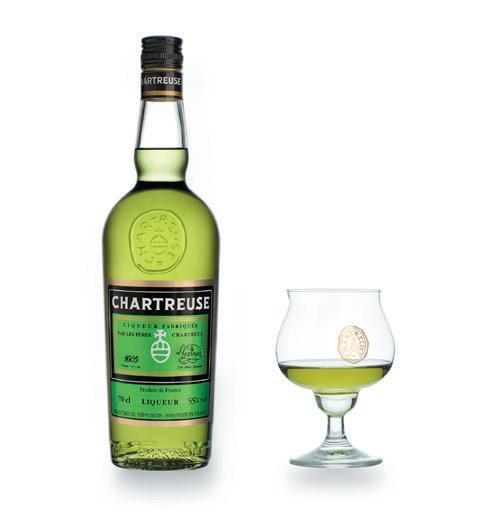
REMEMBER PRECEDENTED TIMES? Letter from the Editor — p. 2
ALL THE WORLD’S A CANVAS Art All Around Us — p. 3
THE PIANO-PLAYING LAWYER Barton Spotlight — p. 5
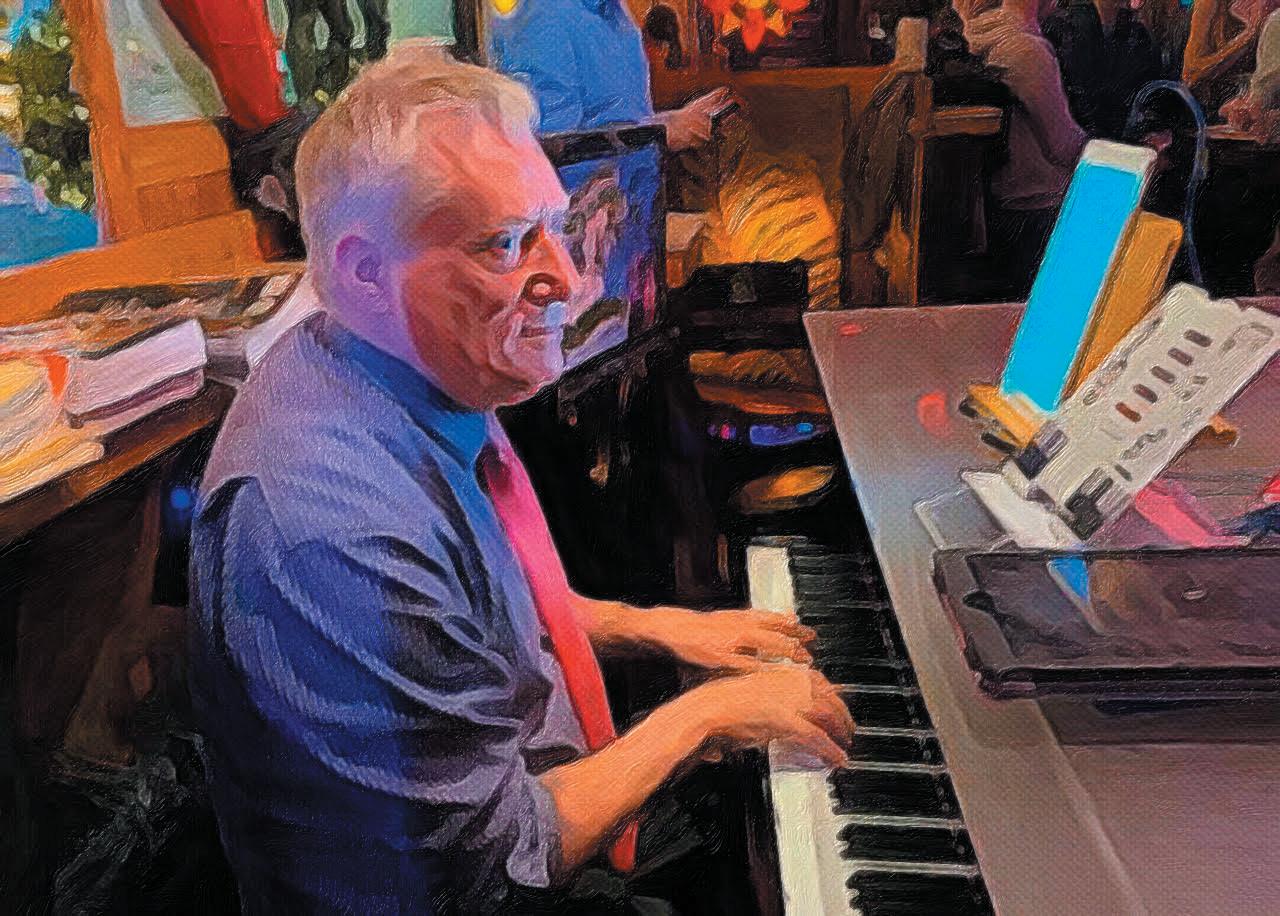
MOVED BY THE SPIRIT Unique Clients — p. 7
CYCLE FOR SURVIVAL Community Heroes — p. 9
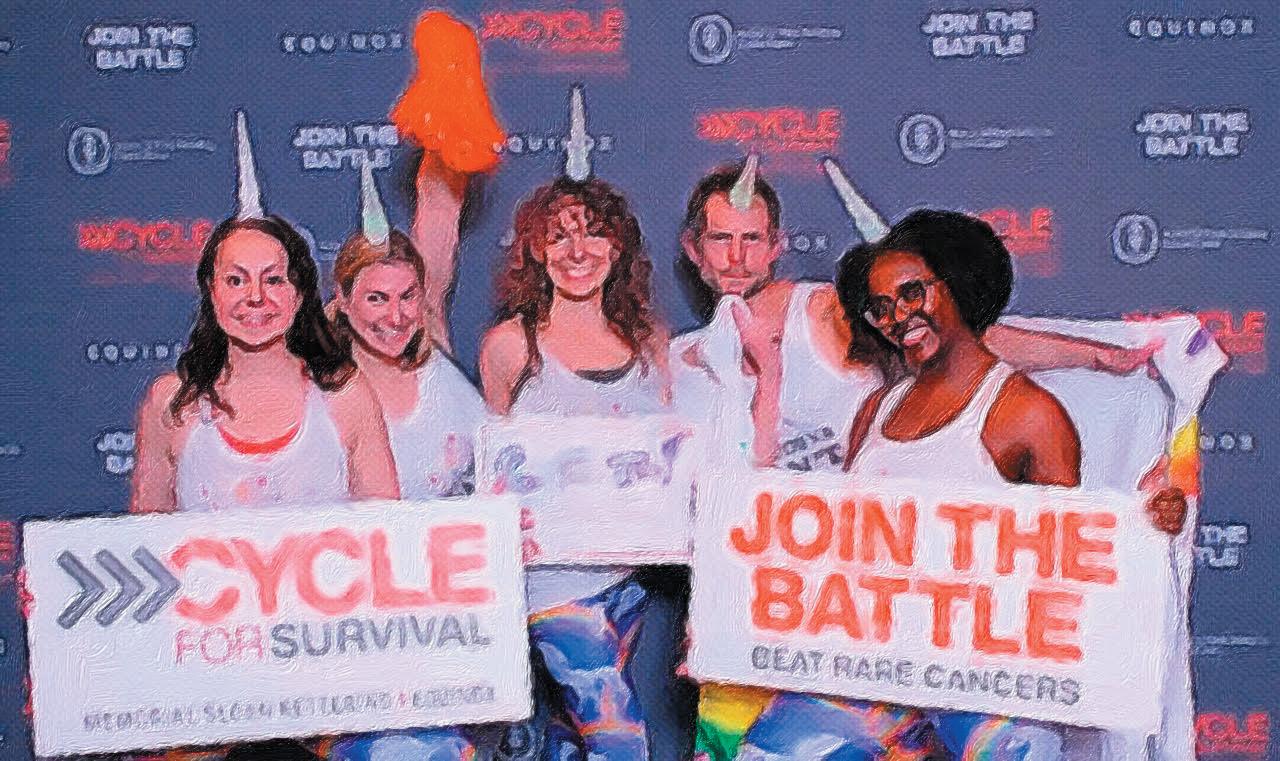

DO IT FOR THE ’GRAM Broadway to Broadway — p. 11
HEY, WE’RE MAKIN’ A MOVIE HERE! Shot for Shot — p. 13
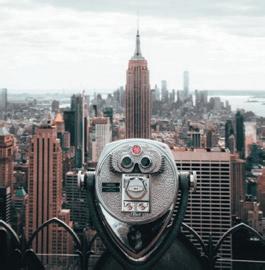
II DISCOVERBETTERLAW
Barton is committed to providing our clients with the highest quality legal services delivered in an effective and efficient manner. We believe that a better product, value and client experience are achieved by providing our clients with highly skilled senior attorneys who work directly on their matters and who take the time to understand clients’ organizations, objectives and long-term goals. We know that clients prioritize managing their resources and creating efficiencies, and they want lawyers who are able to do the same. We invite you to experience the difference and Discover Better Law with Barton (bartonesq.com).
LOCATIONS
York, NY 711 Third Avenue 14th Floor New York, NY 10017 Phone: 212.687.6262
212.687.3667 Nashville, TN 1033 Demonbreun Street Suite 300 Nashville, TN 37203 Phone: 615.340.6790
615.238.6762
New
Fax:
Fax:
bartonesq.com
As probably every publication, commercial, and email you’ve seen in the past eight months has informed you, we are living in unprecedented times. Uncertain times. Challenging times, even. If you really want to spice it up, you could say that we’re in uncharted territory (or uncharted waters if you’re more nautically inclined).
We treat these buzzwords like comfort food— easily digestible and a more comprehensible way to understand the absolutely incomprehensible world around us. But regardless of how you phrase it, whatever your euphemism of choice, it’s been one heck of a rough year.
As an editorial team, we made the decision back in March to postpone the second installment of The Side Bar. We did this because we believed that there were other voices that needed to be heard and other stories we didn’t want to distract from.
We also understand that for the past eight months, many of our readers have experienced elevated levels of confusion, frustration, and anxiety. Few could have guessed that 2020 would bring an ongoing global public health crisis, an ensuing crippled economy, a slew of natural disasters, widespread social unrest, and a complete upheaval of life as we know it.
We acknowledge the fact that these issues are still very much affecting people and will likely continue to affect us all for some time to come. However, as we’ve slowly begun to adapt to what many predict will be the “new normal” (there’s another cliché for you), we at Barton have found ourselves wanting to return to one of our favorite pastimes: telling stories.
The stories you’ll find herein are certainly not the most pressing headlines out there. But we do hope that reading these might bring a splash of joy to your day, might lessen the load of stress you’re bearing, if only by a fraction or if only for a moment.
In this edition of The Side Bar, we investigate the psychedelic, larger-than-life murals of Brazilian street artist Eduardo Kobra.
We find out from Maurice what it’s like to be a lawyer who plays piano professionally at some of the most well-renowned clubs in the city— and hopefully will do so again soon!
We discover what on earth French monks, liquor, and a secret recipe for long life have to do with one of our clients.
We catch up with Team Rainbow Unicorns (yes, you read that correctly) about how they’re helping save lives by spinning their wheels.
And we give a rundown of the most Instagrammable spots in New York and Nashville so it can at least feel like we’re getting to travel and see the sights.
We thank you for taking the time to read and engage with our stories, despite the fact that there are a million other things vying for your attention right now. You mean the world to us.
Here’s wishing you health, happiness, and fewer Zoom calls in the days to come.
Roger E. Barton Managing Partner

LETTERFROMTHEEDITOR 2LETTERFROMTHEEDITOR
Remember Precedented Times?
All the World’s a Canvas
Eduardo Kobra’s Street Art Pays Homage to Cultural Icons

As famous as New York is for the priceless artwork housed in its many prestigious, expertly curated museums, it’s equally as famous for its rich array of street art climbing along the city’s facades and nestling in its neighborhoods. While these larger-than-life works of art can often seem to spontaneously materialize as part of the city’s magical quality, the stories of the very real artists behind these works are often just as compelling as the works themselves.
Enter Eduardo Kobra. Born in 1976 in a neighborhood on the outskirts of São Paulo, Brazil, Kobra became interested in graffiti art in his early teens. He began his art career by illegally tagging walls on the streets of São Paulo and was highly influenced by both hip-hop culture and books chronicling the rise of street and subway art in New York. Completely self-taught, Kobra found inspiration in the styles of famous avant-garde artists such as Banksy, Keith Haring, Jean-Michel Basquiat, Diego Rivera, Eric Grohe, and Andy Warhol.
Kobra has since gone on to earn international fame for his artwork. He’s completed projects on 5 continents, in
over 40 cities. His personal style is wholly unique and unmistakable, incorporating rainbow-colored, geometric patterns that create a striking, kaleidoscopic effect. His vibrant color palettes are often integrated with black-and-white hyper-realistic versions of the subjects he’s painting—many of his murals are in fact reimaginings of actual photographs.
Kobra’s subjects routinely include historical figures, activists, great thinkers, and pop culture icons. Of the 19 murals Kobra currently has on display in New York, he depicts the likes of Mother Teresa, Mahatma Gandhi, Elvis Presley, C-3PO, Michael Jackson, Amy Winehouse, and Jimi Hendrix, among many others. Kobra’s murals often provide social commentary, pay homage to an iconic figure, or both. His pieces frequently address social issues, centering on themes such as peace, tolerance, violence, race, class conflict, immigration, and technology.
The best part for us at Barton is that we don’t have to go very far to see some of Kobra’s incredible work—three of his murals are within walking distance of our New York office. And they’re all pretty stunning. See for yourself…
TITLE: “GENIUS IS TO BIKE RIDE”
SUBJECT: Albert Einstein, German-born theoretical physicist
WHERE: 48th Street & 3rd Avenue
CREATED: September 2018
Original photo taken by California Institute of Technology trustee Ben Meyer on February 6, 1933, in Santa Barbara, California.
WHAT’S IT’S ABOUT:
Cycling was reportedly a favorite pastime of this eccentric genius. In a letter written to his son in 1930, Einstein mused that, “Life is like riding a bicycle. To keep your balance, you must keep moving.” It’s also rumored that Einstein first conceived of the theory of relativity while riding his bike, alluded to in the mural by the bike’s front plate reading “peace=heart 2 ,” an equation mimicking Einstein’s famous “E=mc 2 .” This piece was allegedly also Kobra’s way of weighing in on a debate regarding installing more bike lanes in the city after a spike in cyclist deaths.

ARTALLAROUNDUS 3
TITLE: “THE BRAVES OF 9/11”
SUBJECT: Michael Bellantoni, FDNY Firefighter
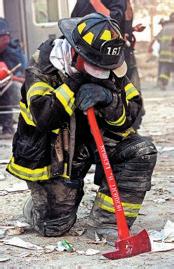
WHERE: 49th Street & 3rd Avenue
CREATED: September 2018
Original photo taken by New York Post freelance photographer Matthew McDermott on September 11, 2001, at Ground Zero.
WHAT’S IT’S ABOUT:
In honor of the emergency personnel who risked their lives responding to the tragic events of 9/11, this 7-story-tall mural was unveiled on the tragedy’s 17th anniversary. It depicts real-life firefighter Michael Bellantoni kneeling to rest amidst the chaos and destruction of the September 11th attacks. The number “343” on the firefighter’s helmet honors the 343 New York Fire Department members who lost their lives that day, while the Twin Towers are incorporated into the background as the white stripes on the American flag. The piece is meant to honor and remember those who were willing to sacrifice everything, while also expressing a message of hope, life, and restoration.

TITLE: “PEACE”
SUBJECT: Roy Lichtenstein, American pop artist
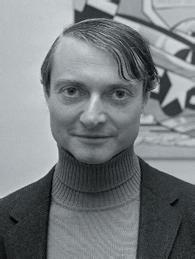
WHERE: 44th Street & 3rd Avenue
CREATED: August 2018
WHAT’S IT’S ABOUT:
This piece is unique in that it merges Kobra’s signature colorful, kaleidoscopic style with Lichtenstein’s own. Lichtenstein was a prolific pop artist in the 1960s, his style mimicking that of advertisements, comic strips, and cartoons. He popularized the use of speech balloons, Ben-Day dots (like those typically produced by a mechanical printer), bold primary colors, and outlined panels in his artwork. The effect of Lichtenstein’s techniques was to make his artwork look like something mass produced, for the purpose of satirizing the tyranny of modern consumerism.

ALL THE WORLD’S A CANVAS
ARTALLAROUNDUS 4ALLTHEWORLD’SACANVAS
Original photo taken by Eric Koch in 1967 at the Stedelijk Museum in Amsterdam.
The PianoPlaying Lawyer
Have you ever wondered where you can find a highly respected, seasoned lawyer on an average weeknight?
Do they stay home and starch all of their dress pants? Draw a bath and read affidavits for fun? Go to sleep at a sensible hour and dream about depositions?
Not if you’re Maurice Ross. If you’re Maurice Ross, you spend your weeknights at some of the most famous piano clubs and bars in New York, playing for crowds of partygoers and music aficionados alike.

To many of his colleagues, Maurice is known as one of the most adept intellectual property attorneys in the business. He’s been practicing law for almost 40 years and boasts an impressive legal track record to boot. But don’t let his lawyerliness fool you—Maurice knows how to keep a good party going.
The trick? Just don’t stop the music.
How It All Started
Maurice began his piano-playing career at the tender age of 5, at the encouragement of his father who was himself an esteemed musician. By the time Maurice was in his early teens, he could read and play almost anything—from pop and show tunes to rap and rock ‘n’ roll. He began showcasing his talents at events such as fashion shows, while teaching piano lessons throughout high school. His first foray into the musical nightlife scene came as he worked his way through school playing piano professionally at local bars and clubs.
While Maurice enjoyed playing gigs, after becoming a lawyer, his pianoplaying prospects were forced to take a backseat to his budding legal career. But when Maurice came to Barton, after a multi-year hiatus from playing, he decided it was time to pick back up the ebony-and-ivory keyed gauntlet, as it were. After a bit of practice, he was soon performing professionally again.
Now he’s a regular, playing three or four nights a week in New York’s most popular piano lounges, clubs, bars, and cabarets.
These venues have included crowd favorites such as The Monster in the West Village, a multi-level piano bar and disco dance club that supposedly has one of the best frozen margaritas in the city; Townhouse Piano Bar, a Midtown East hangout embodying a cool, cocktail party-esque vibe; and Fusha , an upscale Asian fusion bar also located in Midtown East. Over his many years of playing this nightlife circuit, Maurice has encountered his fair share of celebrity icons and top talent. He often finds himself performing with stars from the world of Broadway, rock ‘n’ roll, pop, and classical music. It’s all in a night’s work.
But there’s someone else who Maurice often meets when playing his gigs that may surprise you: clients.
BARTONSPOTLIGHT 5
Maurice Ross — Intellectual Property Attorney by Day, Musical Marvel by Night
Maurice Ross
Behind the Keyboard, Before the Court
In fact, Maurice meets most of his new clients through his piano-playing, and he welcomes any and all of his current clientele to come hear him play. While a piano bar may at first seem like a strange venue in which to visit with clients, Maurice says that the opposite is true: “Clients like the idea of somebody who has interests outside of the law, and it makes me more accessible and makes me more trustworthy. They can come see me without an advance reservation at a club or bar, and they can sit with me and chat and get to know me on a different level.”
Maurice also believes that his piano-playing humanizes him in the eyes of his clients and helps differentiate him amidst a profession that’s often lacking in creativity. “Creativity is at a premium in the legal profession these days,” he says. “I think one of the big deficits of many lawyers is a lack of creating and thinking outside the box.”
One may be wondering why exactly a lawyer would need to be creative. But according to Maurice, the same creativity that goes into something like playing the piano is also what goes into a good court performance. In both scenarios, you’re attempting to engage an audience and keep them interested. More than that, you’re attempting to persuade the audience and gain their approval. Whether you’re gauging the reactions of a crowd of rollicking club-goers or those of a judge and jury, you have to be able to understand the feedback you’re getting and adjust quickly. Be it playing a set or making an oral argument, the ability to adapt to an audience’s reactions is crucial to a successful performance. Because of this, Maurice feels like his piano-playing has actually enhanced his abilities as a lawyer, while his career as an attorney has duly benefited his music career.
Looking Forward to the Future
Unfortunately, for now, live performances—of both the musical and legal variety—have ground to a halt due to the ongoing COVID-19 crisis. This pandemic has been especially hard on New York’s nightlife, adversely affecting performers, club owners, staff, and patrons alike.
But even with the prospect of live performances postponed for the foreseeable future, Maurice has never stopped playing. In fact, he might be playing even

more now. In an attempt to keep New York’s piano bar community in touch, Maurice began playing informal shows on Facebook Live several nights a week, sometimes even collaborating with other musicians. What started as a local initiative has ended up with a much wider reach—on a good night, over 400 people from all over the world will tune in to watch Maurice play. Among these viewers are many of Maurice’s clients, other Barton attorneys, and prominent figures from all corners of the entertainment industry. As Maurice will tell you, you never know who’s going to tune in on any given night.
As he looks toward the future, albeit an uncertain one, Maurice has no plans to stop playing anytime soon. Many people have come to regard his virtual playing sessions as their much-needed reprieve from the chaos and uncertainty of everyday life.
Maurice also wants to continue to set an example for younger attorneys facing the difficult task of juggling their demanding legal careers with their outside interests. To this dreaded “work-life balance” conundrum, Maurice says, “I’m proof for young attorneys that you don’t have to ‘give up everything’ to be a lawyer. A good lawyer doesn’t give up everything, a good lawyer tries to integrate everything together so that it works. You shouldn’t be a slave to the law when there are ways to use the law to help accentuate your other expertise and vice versa.”
And it’s safe to say, that as long as there are lawyers like Maurice who continue to follow their passions and dance to their own tune, the legal world will be a much more interesting, more colorful place. ♦
BARTONSPOTLIGHT 6THEPIANO-PLAYINGLAWYER
Moved by the Spirit
The History of Chartreuse Liqueur & the Carthusian Monks

Our client’s story begins 936 years ago.
In 1084, Roman Catholic priest and scholar Saint Bruno of Cologne founded a small community of monks in the Chartreuse Mountain region in the southeast of France. This mountain range—just west of the French Alps and situated between the cities of Grenoble, Voiron, and Chambéry—would become the namesake of the monks who lived there. The group came to be known as the Carthusian Order, “Carthusian” being a derivative of the word “chartreuse.” The newly formed Order prioritized tenets such as solitude, prayer, humility, and dedication to God.

521 years later…
By 1605, the Carthusian Order had grown considerably and had expanded to several monasteries in both France and Britain. It was at this time that Duke François-Annibal d’Estrées, a future marshal of King Henry IV, gifted the Carthusian monastery in Vauvert (near Paris) with an ancient manuscript detailing a recipe for an “Elixir of Long Life.” The recipe outlined an intricate process for creating a tonic concocted of 130 plants, flowers, barks, spices, and roots suspended in wine alcohol. However, due to the manuscript’s complexity and the monks’ limited understanding of the medicinal value of plants at the time, the recipe went largely unused.

132 years later…
In 1737, the apothecaries and alchemists at La Grande Chartreuse (the Carthusians’ mother house in the Chartreuse Mountains) were able to decode the elusive secrets of the manuscript. The result of the recipe was a naturally yellowishgreen liquid named the Elixir Végétal de la Grande Chartreuse that the monks began to sell in the nearby villages as a medicinal tonic. However, the cordial also happened to be delicious, combining a palette of floral flavors that were sweet, spicy, and pungent all at once. The drink soon became so popular among the locals that it was being consumed more for its taste than its medicinal properties.
103 years later…
In 1840, realizing they could sell the elixir better as a beverage than as a medicine, the monks adjusted their recipe to make milder versions of the alcoholic drink that became the liqueurs known as “Green Chartreuse” and “Yellow Chartreuse.” Soon afterwards, the Order constructed its own proper distillery so it could begin production of its liqueurs on a larger scale as the popularity of the drink began to spread internationally.
Today…
Just as they did 10 centuries ago, the Carthusian monks continue to value solitude and seclusion from the world in order to dedicate their lives to constant prayer and contemplation. However, they also maintain a strong communal life within the monastery itself and continue to produce the various Chartreuse liqueurs in order to fund their monasteries and support their charitable causes.
The liqueurs produced today are still based on the manuscript from 1605 and are enjoyed the world over. Since 1970, Chartreuse Diffusion—a French artisanal company that is also a current Barton client—has handled all of the bottling, packaging, marketing, and distribution of the beverages. Chartreuse Diffusion works to serve the Carthusian Order’s interests, preserve their sustainability, and
UNIQUECLIENTS 7
St. Bruno, the Carthusian by Jusepe de Ribera (1643)
Chartreuse distillery in Aiguenoire, France | Photo credit: Stéphane Couchet
allow them more freedom to focus on their religious duties. Having built up a brand of national renown, Chartreuse now generates a turnover of 20 million euros for a production of 1.5 million bottles per year.
However, the monks still remain the master distillers and the only ones in possession of the secret recipe and ancestral know-how. Two of the monks are designated as holders of the recipe and are responsible for the precise process of drying, crushing, and mixing the 130 herbs and botanicals necessary to make the liqueurs. After the secret mixture is created, it is sent to the Chartreuse distillery to be macerated, distilled, and aged in oak casks for many years until ready for consumption. The finished product bears Chartreuse’s signature natural green and yellow colors that help distinguish it from other spirits—so much so, that the color “chartreuse” got its name from the drink.
But it hasn’t always been an easy road.
As one of the oldest Christian religious orders in the world, the Carthusian Order is no stranger to adversity. The Order has survived almost 1,000 years of wars, political upheavals, natural disasters, and other hardships. In 1132, the Order’s first monastery was destroyed by an avalanche that also killed several monks residing there. Between 1793 and 1816, the events of the French Revolution forced all religious orders out of France, and the monks had no choice but to abandon their monastery. In 1903, the French government nationalized the Carthusians’ monastery and
distillery, once again expelling the monks from their home. Two decades later, in 1935, the distillery was catastrophically destroyed in a landslide.
However, through the vicissitudes of history, the monks of the Chartreuse Order have always persisted. They have always returned, have always rebuilt, have always carried on through the ages with their mission to serve God. Their resilience is powerfully illustrated in their motto: “Stat crux dum volvitur orbis ” or “The Cross is steady while the world is turning.”
The Carthusian Order has survived, and will continue to do so, despite the trials of life. The Chartreuse company is likewise inspired by the resilience of the Order and remains committed to sustaining and advancing the production and distribution of Chartreuse liqueurs, the Order’s sole means of subsistence. The company seeks to develop its brand while promoting customer loyalty around the philosophy and value of Chartreuse liqueurs: quality, tradition, authenticity, and long-term vision. In this way, Chartreuse works to ensure the great future of one of the oldest liqueurs in the world.

How to Enjoy Chartreuse!
While Chartreuse liqueurs are often enjoyed neat or on ice, they are very popular in cocktails as well, especially in the United States. The Chartreuse-inspired cocktail called “The Last Word,” for example, has recently enjoyed new popularity in the 21st century. Originally conceived at the Detroit Athletic Club in 1925 at the height of the Prohibition Era, this drink gradually fell out of popular use.

However, in the early 2000s, a Seattle bartender re-discovered the recipe in a 1950s cocktail manual and gave the drink a second life, reviving its popularity among contemporary cocktail drinkers. Chartreuse’s aromatic complexity, color, and strength have made it an essential for bartenders and a unique addition to the world of mixology. ♦
The Last Word
3/4 ounce gin
3/4 ounce fresh-squeezed lime juice
3/4 ounce maraschino liqueur
3/4 ounce green Chartreuse
Combine ingredients in a cocktail shaker. Fill with ice and shake briskly for 10 seconds. Strain into a chilled cocktail glass.
UNIQUECLIENTS 8MOVEDBYTHESPIRITS
Green Chartreuse Liqueur
Photo credit: Stéphane Couchet
Stat crux dum volvitur orbis
Cycle for Survival
Saving Lives and Enjoying the Ride
The room is dark and loud. Certified disco anthem “I Will Survive” blasts out from the speakers somewhere behind you. Your calves are burning and sweat glistens on your forearms…or is that glitter? One of your teammates hands you a towel and another shakes pom poms wildly, cheering you on. Your legs are quickly turning to jelly, but you don’t stop pedaling because this is what Cycle for Survival is all about—never giving up.
Founded in 2007, Cycle for Survival is a national movement dedicated to fighting rare cancers. You may be asking, why rare cancers? Aren’t those…rare? In reality, a staggering 50% of those diagnosed with cancer have some form of a rare, incurable cancer. Rare cancers include brain, pancreatic, ovarian, thyroid, and stomach cancers; leukemia and lymphoma; and all pediatric cancers, among others. Despite the high incidence of rare cancer in general, individually these illnesses are drastically underfunded when it comes to research. This makes for limited treatment options for those who have been diagnosed.
Cycle for Survival’s goal is to increase awareness surrounding these illnesses while also raising the money to fund new ways of diagnosing and treating them. All of the proceeds from Cycle for Survival’s events go directly to Memorial Sloan Kettering Cancer Center, the world’s largest and oldest private cancer center. The Center uses this money for its pioneering work in developing new diagnostic tools, experimental therapies, and clinical drug trials.
Cycle for Survival holds massive indoor cycling events all over the country, where teams ride stationary bikes



relay-style for a four-hour shift. The high-energy events are led by instructors from Equinox, Cycle for Survival’s founding partner, and use a peer-to-peer fundraising model with each participating team accruing donations for the cause.
In February, the fundraiser celebrated passing the $250 million mark for total funds raised since its inception in 2007. What started as a relatively small event with 230 participants and 50 stationary bikes, has grown into a national movement with over 37,000 people riding 9,000 bikes across 17 U.S. cities, with the money raised providing invaluable funding for Memorial Sloan Kettering’s research initiatives.
Barton’s connection to Cycle for Survival began three years ago with the involvement of one of our litigation partners, Laura-Michelle Horgan. For the past three years, LauraMichelle has been participating in the annual cycling events with a team of her dedicated friends. Barton, as well as many of its employees, have enjoyed supporting LauraMichelle and donating to such a deserving cause.
Laura-Michelle’s team calls themselves “Team Rainbow Unicorns.” (And let the record show, they chose this name before unicorns became cool.) For the cycling events, Laura-Michelle and company go all out. Their uniform consists of printed shirts reading, “Unicorns Don’t Sweat, They Sparkle” and leggings covered in unicorns and shooting rainbows. To top it all off, they wear glowing unicorn horns as they ride. Laura-Michelle explains that the outfit makes the day more fun and
COMMUNITYHEROES 9
makes her team stand out from the rest of the crowd.
Team Rainbow Unicorns had already been participating in other exercise-oriented charity events for years prior to their Cycle for Survival involvement. However, as members of the group began having increased workloads and family obligations, time-consuming fundraisers such as bike tours or marathons became less logistically feasible. So when a member of the team proposed Cycle for Survival as an alternative, the team realized that the fundraiser fit really well into their multiple busy schedules. And it was also a ton of fun.
Of her teammates, LauraMichelle says, “My friends are an eclectic group of very motivated, professional, accomplished people who are also really fun and into music. They’re always into doing creative things and Cycle for Survival is a great way to express that creativity.”

Laura-Michelle describes the actual cycling event as a cross between a workout class and a nightclub. A
mixture of pop, hip-hop, and house music helps keep the atmosphere high-energy. Laura-Michelle’s teammates take shifts on the stationary bike while the others act like a NASCAR pit team. They shout encouragement, provide water, offer towels, make sure the bike is adjusted to the rider’s comfort, and will even hold up the rider’s cell phone so they can Facetime their kids mid-trek. It’s the ultimate team effort, in terms of both the cycling and the obtainment of donations. To date, Team Rainbow Unicorns has raised over $25,000 for the Memorial Sloan Kettering Cancer Center.
Between the riding sessions, there are also often guest speakers who discuss the types of research the event is helping to fund or share personal stories about how they and their families have been affected by rare cancers. Laura-Michelle notes that Cycle for Survival is refreshingly straightforward and transparent regarding the use of the money that’s raised. “It’s cool that this money allows researchers to pursue outof-the-box ideas that corporate and government funding don’t always
cover,” she says. “We get to see how the money from the fundraiser is being allocated and how it’s helping to change lives.”
Although the cycling itself can be tough at times, it’s worth every second of it for Laura-Michelle and the rest of Team Rainbow Unicorns. There’s no denying that Cycle for Survival is indeed a fight. It’s a fight against the ravages of rare cancer and a fight for the lives of all those affected by these diseases. But Cycle for Survival is also a celebration, one that shines a spotlight on the strength of those grappling with these illnesses, the ingenuity of those on the forefront of finding new treatments, and the collective impact of those who come together in the name of a single cause.
So to Team Rainbow Unicorns, keep on ridin’ on. ♦
Cycle for Survival currently holds annual events in 17 cities across the country. If you’re interested in learning more, donating, or becoming a participant, please visit cycleforsurvival.org.

COMMUNITYHEROES 10CYCLEFORSURVIVAL
Do It For the ’Gram
Exploring New York and Nashville’s Most Instagrammable Spots
NEW YORK Brooklyn Botanic Garden
Amidst the sprawling urbanscape of Brooklyn lies a 52-acre oasis of flowers and foliage. Here you’ll find bursting red dahlias, sundrop yellow daylilies, pink Japanese cherry blossoms, royal blue hyacinths, and thousands more. Whatever your color palette preference, you can find it here.

Top of the Rock
If heights don’t make you woozy, then the observation deck on the 70th floor of 30 Rockefeller Plaza is one of the best photo ops in the city. Offering stunning 360-degree views of New York and its most iconic buildings, Top of the Rock is the best place to capture the perfect panoramic.

The Vessel at Hudson Yards
An architectural phenomenon, the Vessel sits at the heart of Hudson Yards. Likened by many to an enormous honeycomb, the structure is composed of 154 interconnected flights of stairs that provide access to wholly unique views and vantage points.

Dumbo, Brooklyn
If you’re wanting to capture the classic New York aesthetic, the corner of Washington and Water Streets in Brooklyn’s Dumbo neighborhood is the place to be. Quaint cobblestones streets lead to a great view of the Manhattan bridge, all naturally framed by historic redbrick buildings and blue sky.

The Color Factory
This is the stuff Instagrammers’ dreams are made of. The Color Factory in New York’s SoHo neighborhood is an experiential art exhibit immersing visitors in a world of color. From ball pits to neon dance floors to splashy painted hallways, there is no shortage of photo-worthy spots.

Solomon R. Guggenheim Museum
For those wanting to get truly artsy, the Guggenheim art museum on the Upper East Side is a must-see collection of contemporary and modern art. Besides housing works by some of the greatest artists in modern history, the building itself is an artistic wonder, designed by famed architect Frank Lloyd Wright.

BROADWAYTOBROADWAY 11
NASHVILLE
Flower Mural at 12 South
While Nashville is home to many gorgeous murals, the Flower Mural on 12th Avenue South is notable for its richness and vibrancy. The collage of wildflowers stands in stark contrast to its urban surroundings, giving it a certain air of tranquility amidst an otherwise bustling city.

I Believe in Nashville

Also located on 12th Avenue South, this mural is undoubtedly Nashville’s most famous, made even more impressive by the fact it was created as recently as 2012. The boldly colored mural is an Instagram favorite (it’s appeared on the platform more than a million times) and is a must-see for visiting photo-holics.
Honky Tonk Highway
Running along Lower Broadway Street, Nashville’s famous Honky Tonk Highway is a menagerie of restaurants, bars, and live music venues stretching for almost two blocks. Distinguished by an eclectic array of neon signs, this iconic thoroughfare has all of the country-western glitz and rock ‘n’ roll glamour you could ask for.
Gaylord Opryland Resort Indoor Gardens

If a backdrop teeming with tropical and southern plants housed in soaring atriums appeals to you, look no further than the expertly curated nine-acre indoor gardens of the Gaylord Opryland Resort. Open to the general public, the gardens provide the lush, picturesque scenery without the oppressive heat or mosquitos.
John Seigenthaler Pedestrian Bridge
A historic landmark and hotspot for visitors, Nashville’s pedestrian bridge provides amazing views of the Cumberland River and the city’s burgeoning skyline. The bridge’s unique truss design also makes the structure itself a beautiful backdrop and a great place to catch the sunset.

Printers Alley

Located in downtown Nashville, Printer’s Alley is the heart of the city’s nightlife. Originally a publishing hub in the early 1900s, the alley became home to numerous clubs, saloons, and speakeasies in the 40s. Today, the alley houses stylish night clubs that pay homage to their rowdy predecessors.

BROADWAYTOBROADWAY 12DOITFORTHE’GRAM
Hey, We’re Makin’ a Movie Here!
New York As the Set for America’s Most Famous Films
Since the film industry’s inception, New York has served as the setting for scores of films, including critically acclaimed dramas, gritty thrillers, dreamy rom-coms, and cult classics alike. While many parts of these movies were actually filmed on California backlots and soundstages, several of these productions opted to shoot their most iconic scenes on-location in the city itself. And who can blame them? New York is a difficult place to mimic. No imitation set could ever substitute for the authentic chaos, beauty, and unpredictability of the original.
While a lot can change in the city over the course of even a few years, below are eight filming locations that appear more or less the same as they did in the movies that made them famous. In many ways, New York is quite the magic portal, affording us the chance to step right through our screens and into the fictional worlds of the movies we love the most.

1
TIFFANY & CO. STORE
727 Fifth Avenue and East 57th Street
Breakfast at Tiffany’s (1961)

Contrary to (some) popular belief, this famed jewelry store was not originally a breakfast spot. However, the store has recently opened its own café so that we can now gaze at luxurious diamonds while munching on pastries, just as Holly Golightly would have wanted.
2
FIREHOUSE, HOOK & LADDER COMPANY 8
14 North Moore Street and Varick Street
Ghostbusters (1984)
Currently a fully operational firehouse displaying the Ghostbusters’ sign in its garage. It may be a little less supernaturally-inclined these days, but it’s probably still the best place to call if you see something strange in your neighborhood.
3
ST. PATRICK’S OLD CATHEDRAL
263 Mulberry Street and Prince Street
The Godfather (1972)
A versatile venue. Perfect for christening ceremonies and being symbolically anointed as the new Don of your family crime syndicate. The lighting is a little sparse, but the irony is rich.

SHOTFORSHOT 13
4
5THE DAKOTA
1 West 72nd Street and Central Park West Rosemary’s Baby (1968)


SHEEP MEADOW, CENTRAL PARK
Between 66th and 69th Streets
Wall Street (1987)

You most likely won’t see either sheep or a climactic tussle between Michael Douglas and Charlie Sheen here. However, it’s still a lovely spot for picnics and throwing Frisbee.
An extravagant apartment building known for its beautiful gothic-style architecture and historical intrigue. Notable past residents have included Lauren Bacall, Judy Garland, John Lennon, and the antichrist.
6
KATZ’S DELICATESSEN
205 East Houston Street and Ludlow Street
When Harry Met Sally (1989)

Long considered one of the best places in NYC to get a pastrami on rye. But be forewarned—you’ll more than likely encounter at least one patron reenacting the infamous “I’ll have what she’s having” scene.
7
NEIR’S TAVERN
87-48 78th Street, Woodhaven, Queens Goodfellas (1990)
If you’ve always wanted to be a gangster as far back as you can remember, this Queens establishment is for you. Open since 1829, this tavern remains unpretentious despite its cinematic claims to fame.
8
INTERSECTION
West 58th Street and 6th Avenue
Midnight Cowboy (1969)
The site of Dustin Hoffman’s very much unscripted outburst at a rogue cabbie who ran a red light. Hoffman originally intended to shout “Hey, we’re makin’ a movie here!” but managed to stay in character to deliver the iconic line we know today.

SHOTFORSHOT 14HEY,WE’REMAKIN’AMOVIEHERE!
“My mission in life is not merely to survive, but to thrive; and to do so with some passion, some compassion, some humor, and some style.”
Maya Angelou
Third
14th
York,
10017
711
Avenue
Floor New
NY
DISCOVERBETTERLAW












































